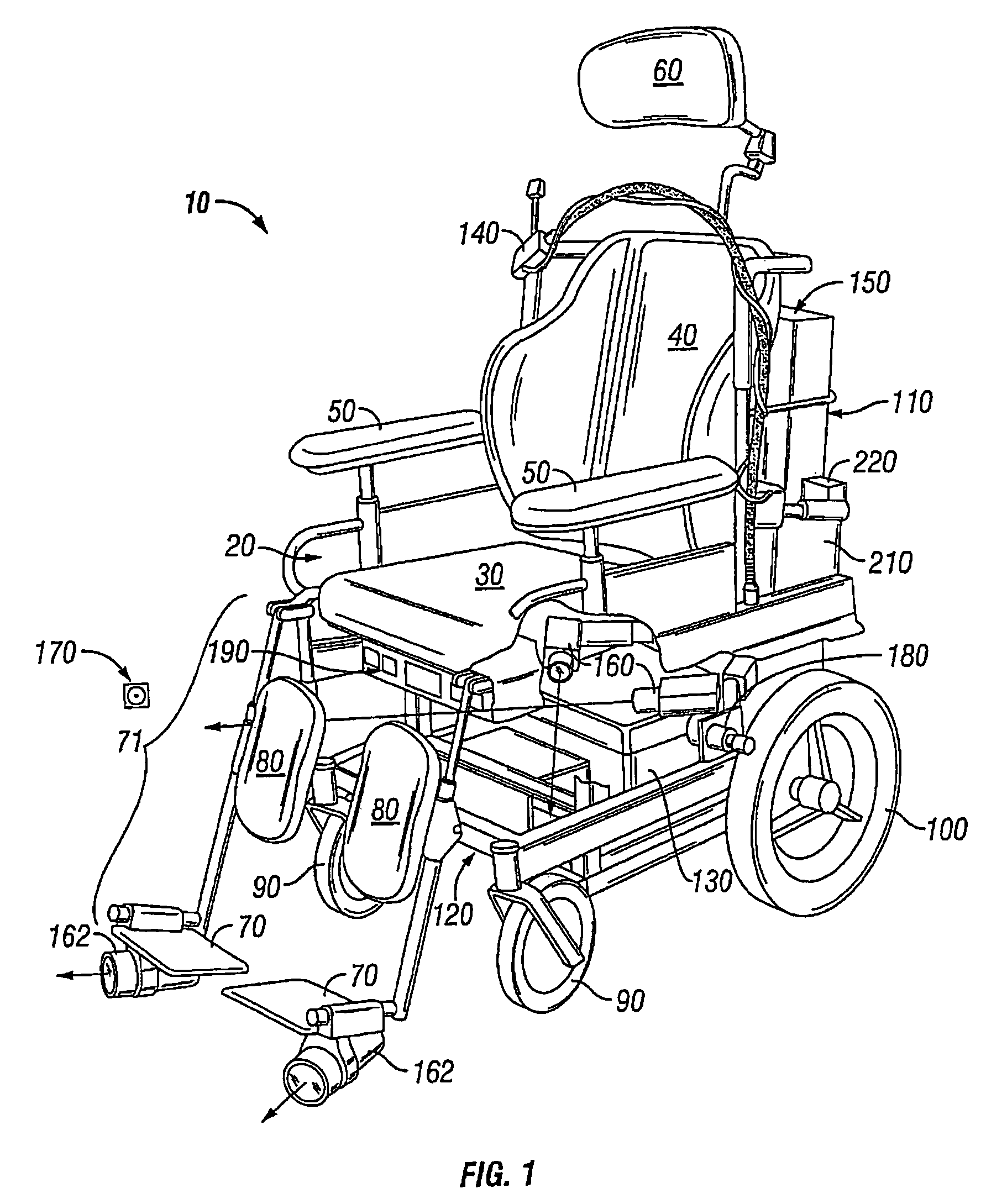Computer-controlled power wheelchair navigation system
a navigation system and computer control technology, applied in navigation instruments, distance measurement, instruments, etc., can solve the problems of not being able to fully autonomously operate the known assistance device, the method has difficulty handling multiple and intersecting paths, and the known assistance device cannot be fully autonomous, so as to achieve the effect of enabling independent mobility for handicapped peopl
- Summary
- Abstract
- Description
- Claims
- Application Information
AI Technical Summary
Benefits of technology
Problems solved by technology
Method used
Image
Examples
first embodiment
[0059]With the first embodiment, initial position estimates were either entered manually from the keyboard or were read from the first path file to be executed. This demanded exact placement of the wheelchair 20 at these coordinates prior to commencing travel, an inconvenient and potentially difficult task with a rider in the chair. Therefore, an additional software module can be used to estimate the wheelchair's initial position based on each camera's 160 ability to locate a unique configuration of cues 170. To enable autonomous navigation for the rider, the wheelchair 20 need only be placed anywhere in the vicinity of these cues 170 when the main software module is launched.
[0060]One of the first tasks of the locator module is to call the initialization routine in a loop. If either camera 160 cannot detect its initialization cues 170, the caregiver / attendant is notified accordingly by both a synthesized voice message and a message box (not shown). The message instructs the rider t...
second embodiment
[0072]The second embodiment has a single computer 150. The main module has a user-interface (U / I) thread which, after all setup and initialization functions have been performed, the thread monitors the microphone or switch for user commands. Once the rider has selected and confirmed a destination for travel, the U / I thread initiates the navigation thread which, in turn, initiates the sonar thread for obstacle detection. During travel, the U / I thread continues to monitor the microphone or switch in the event the rider wishes to stop the wheelchair 20. When travel is completed, the navigation and sonar threads are suspended until the rider requests further travel. Under these circumstances, resources are consumed only as needed, ensuring maximum responsiveness of the user interface to the rider's actions. The threads communicate with each other by setting and reading a status variable. FIG. 6 represents a schematic chart of these parallel processes.
[0073]The navigation system 10 can n...
PUM
 Login to View More
Login to View More Abstract
Description
Claims
Application Information
 Login to View More
Login to View More - R&D
- Intellectual Property
- Life Sciences
- Materials
- Tech Scout
- Unparalleled Data Quality
- Higher Quality Content
- 60% Fewer Hallucinations
Browse by: Latest US Patents, China's latest patents, Technical Efficacy Thesaurus, Application Domain, Technology Topic, Popular Technical Reports.
© 2025 PatSnap. All rights reserved.Legal|Privacy policy|Modern Slavery Act Transparency Statement|Sitemap|About US| Contact US: help@patsnap.com



